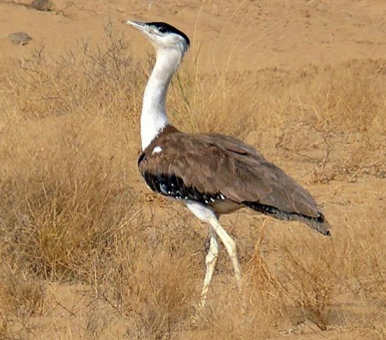Great Indian Bustard: Threats and Protection
The Great Indian Bustard (Ardeotisnigriceps) was once widely spotted across 11 Indian states, but now only less than 250 birds are left all across India. The destruction of the habitat is a primary threat to the bird’s endurance. This critically endangered bird is endemic to the Indian subcontinent. The Great Indian Bustard lives in short-grass plains and deserts in large arid landscapes.
Threats
Key reasons for the decrease in count of the Great Indian Bustard are enumerated below:
- Habitat destruction- The change of land use from grassland to farmland, thus shrinking the bird’s habitat.
- Degradation and disturbance in existing grassland habitat
- Hunting
- Lack of importance for natural grassland conservation in policy, law and PA network due to incorrect perception on ecological value vis-a-vis forests
- Lack of protection for many ‘lekking’ and nesting sites
- Lack of cooperation between different departments/stakeholders in GIB habitats
- Lack of awareness and support from local communities
- Livestock overgrazing and feral dogs
- Disturbance by photographers — there is now plenty anecdotal evidence to demonstrate that photography of the species causes substantial disturbance
Current Status
The Great Indian Bustard is now confined to only eight pockets in 6 Indian states — Rajasthan, Gujarat, Maharashtra, Madhya Pradesh, Karnataka and Andhra Pradesh. The largest population (~50%) can be found in Jaisalmer, Barmer, and Bikaner districts of Rajasthan. Great Indian Bustard is the State Bird of Rajasthan.


